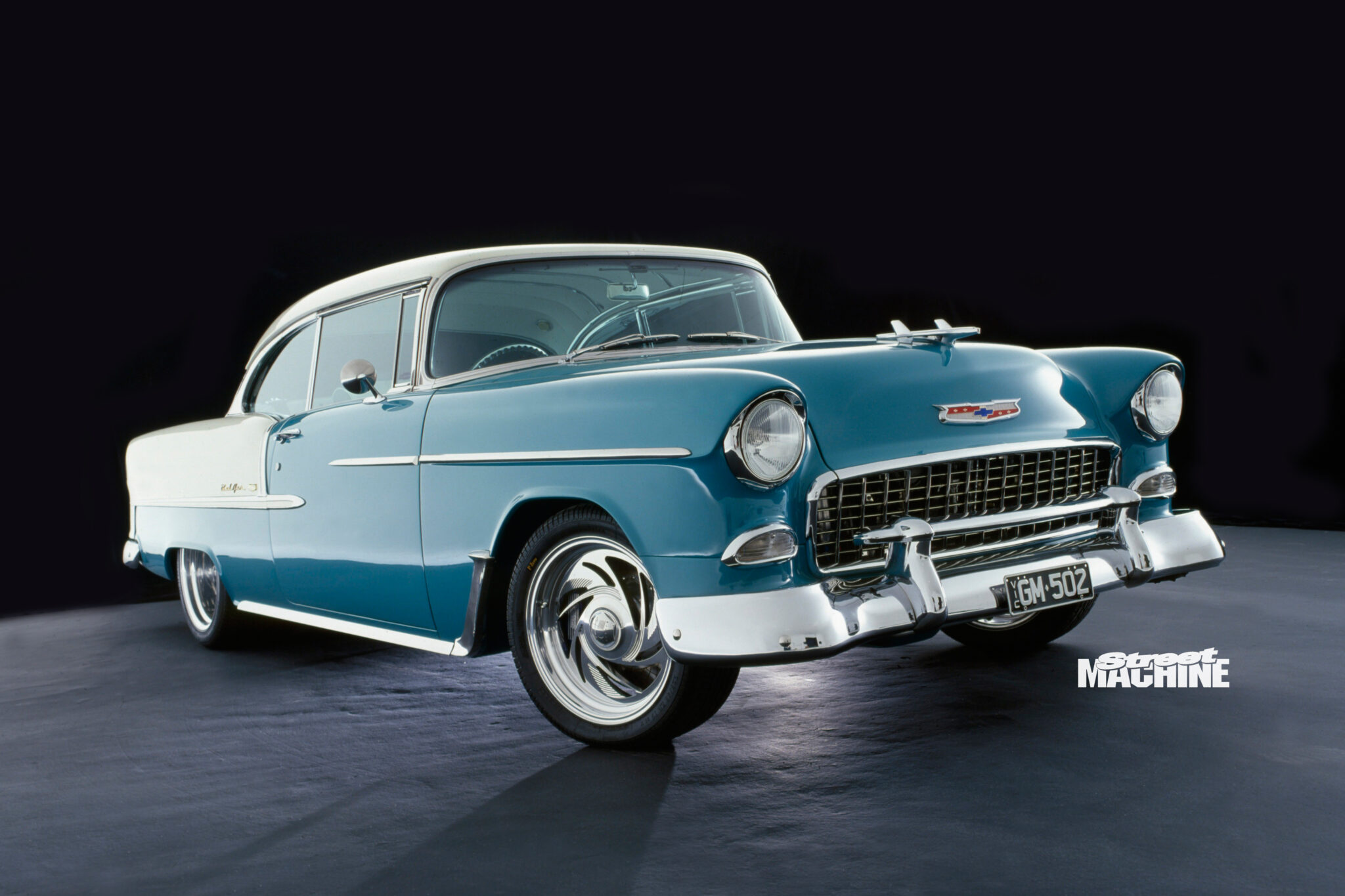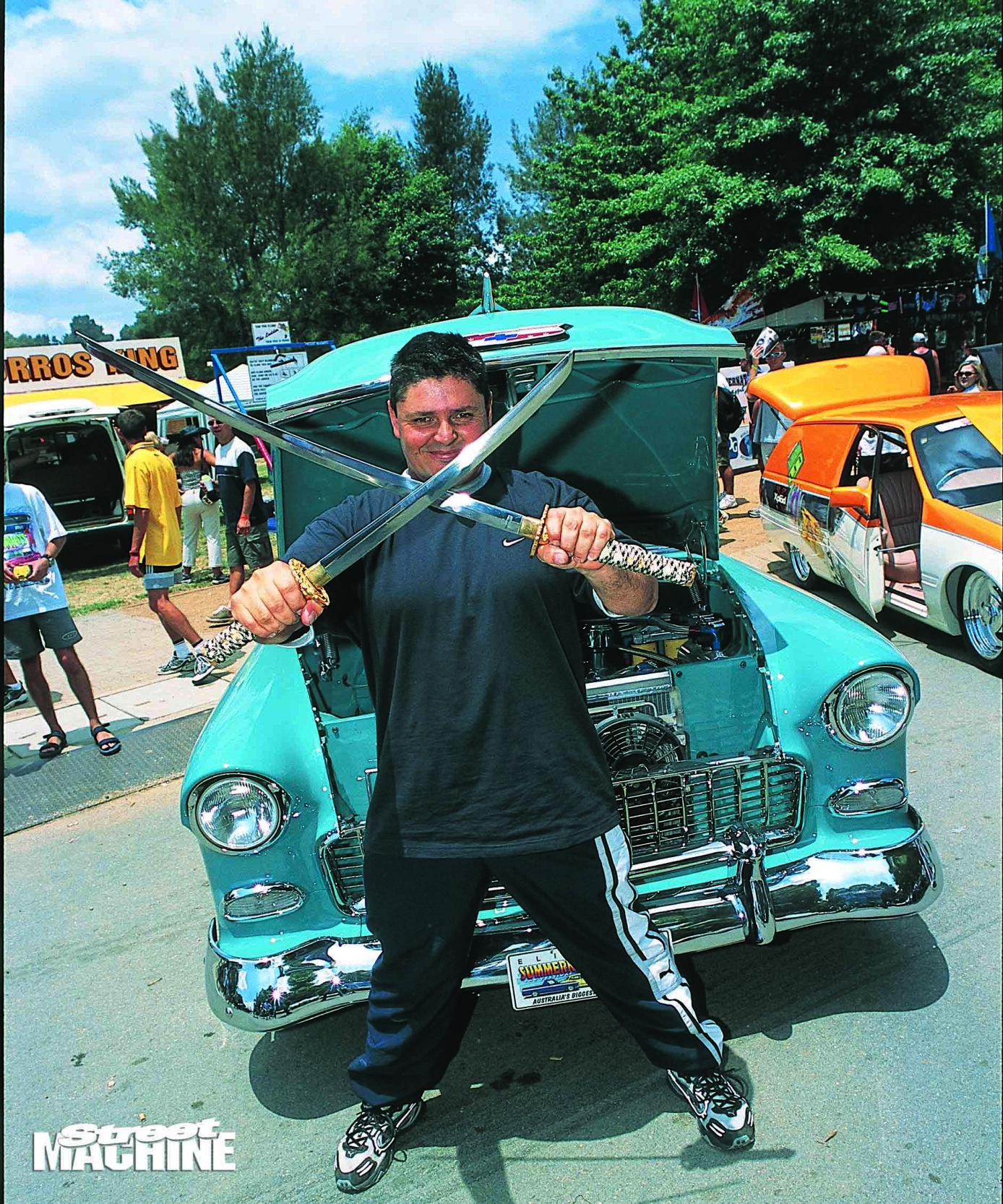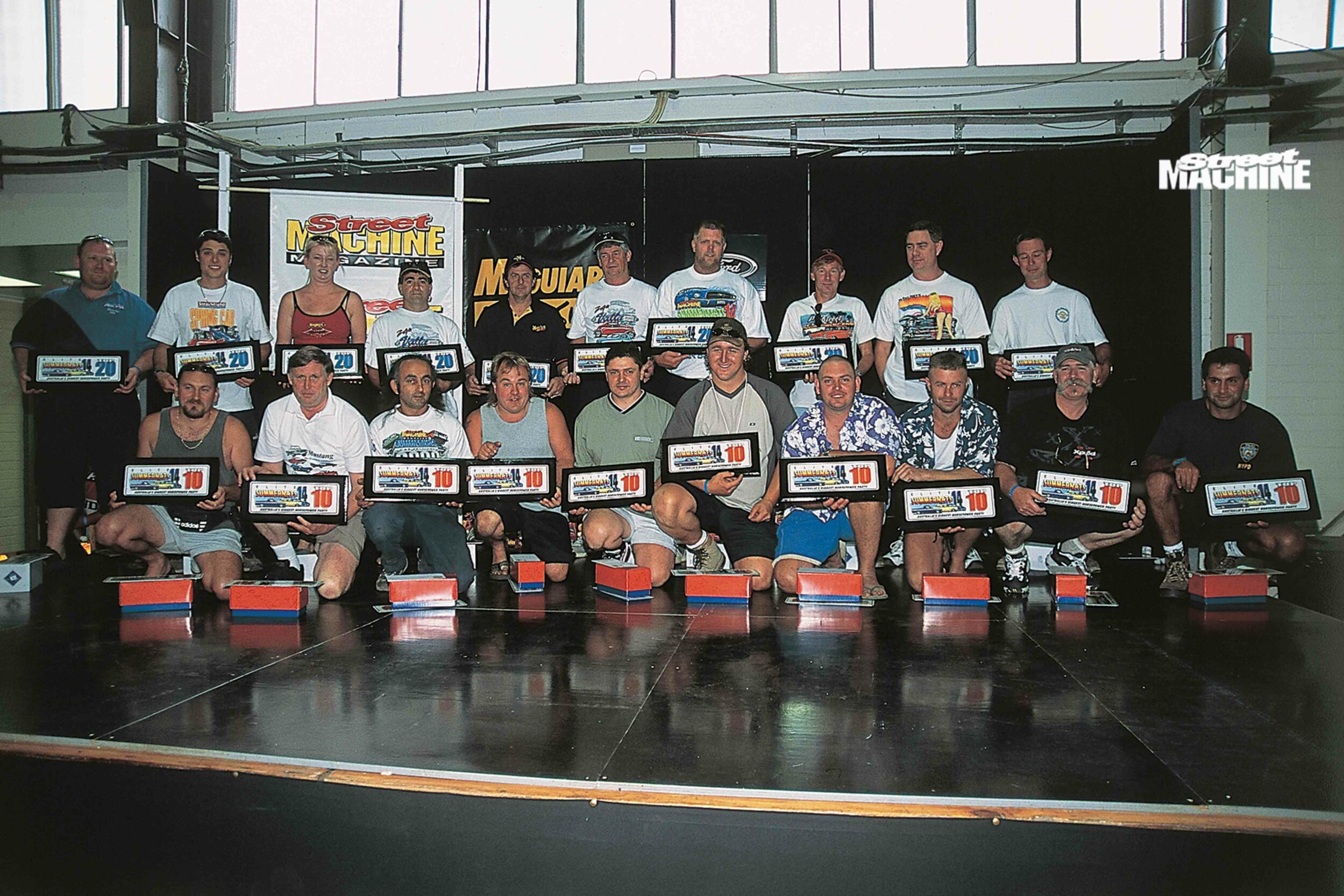
Street Machine Summernats 1995 was a big year for Anthony Fabris. The pilot of a particularly-tough black VL Walkinshaw Commodore etched his name in the minds of Summernats showgoers by proving that street machines don’t have to be old to be tough. His late-model (then seven years young) naturally-aspirated 5.7-litre stroker HSV pumped out a (then-formidable) 325hp at the wheels, taking home the small-block trophy in the first-ever Horsepower Heroes competition.
First published in the August 2001 issue of Street Machine

That was on Sunday morning. Anthony book-ended his Sunday at Summernats with a sensational burnout that put the northern suburbs of Canberra in a shadow. Although he didn’t win the burnout comp, after a place in the prestigious Top 80 and his Horsepower Heroes victory, Anthony left few of the thousands of Summernats spectators in doubt that his Commodore was one of the ballsiest all-round street machines in the country. Back that up with the fact it won Top Muscle Car four years in a row!
And with this year’s Summernats 14 Grand Champion sword in his possession, those words, ballsy allrounder, can also be used to describe Anthony’s most recent toy, this sensational 1955 Chev Bel Air Sport Coupe.

It’s hard to find two cars further apart on the street machining colour wheel than his Walky and this Chev. One’s a black balls-and-all Aussie Bathurst race special; the other a two-tone baby-boomer American cruiser. From 50 metres away, both cars downplay their true talent with almost-stock styling. Anthony kept his VL’s mods restricted to easily-removable bolt-ons (except the black paint) and he certainly didn’t destroy the character of this ’55 Chev.
“I think it’s the best body I’ve ever judged,” says Owen Webb. “It’s just about flawless.”
“I suppose | just got sick of the Walky,” the Melbourne builder says of his decision to build the Chev. “I wanted something American. This one was for sale in Adelaide. The bloke said it was in good condition. So I drove up.” Anthony was luckier than many who have bought a car sight unseen. “This one was in mint condition; a one-owner car.”

Joe’s Golden Gasoline, who brought the Chev to Australia, thought this particular car was so good, they spent 10 years pursuing it in the US before the owner relented and agreed to sell. It was worth the wait. Trailered back to Melbourne, with the body stripped, the car was perfect with nary a flake of rust to be seen, making the job for Brunswick’s M&R Motor Panels much easier. No rush; Anthony left the car there for close to a year to make sure the PPG Turquoise and Ivory paint was as good as it gets.
And the Chev got it good. Owen Webb, judging team leader at Summernats, praised Anthony’s car shortly after it rolled through the judging hall this year. “I think that’s the best body I’ve ever judged. It’s just about flawless,” was Owen’s humble summation. Owen wasn’t by himself with his view – the judges rewarded the Chev with Top Standard Paint and Top Custom Classic in addition to its Top 10 place.

Inside Anthony’s Chev, too, is simply stunning. Anthony had A-Grade Motor Trimmers in Thomastown stitch imported Italian leather over the car’s benches. It’s an era-sympathetic green and white hue, but it’s not quite original, with the tuck and roll pattern based on a 1955 convertible.
“Big blocks and EFI don’t often go together, so the manifold holding up the eight MoTec tennis-ball cans is a one-off Hogan-fabricated piece from the US”
There’s other improvements, too. The dials are from Custom Rod Gauges in the US. “I didn’t want digital,” Anthony says. “I bought them off the bloke in Fresno, California who makes them and he reckoned they were the first set he’d sold for Australia, but I had them stared for a year, so someone beat me in putting them in a car!” The column is an Ididit tilt unit which Anthony also bought in the US. And no trophy for spotting the Billet Specialties twirler. Overall, the old and new fleshes together superbly.



If the difference between a restoration and a street machine is technology, then there are few cars more worthy of the Summernats Grand Champion sword. The running gear on this Chev – especially the engine and brakes – is pure rocket science compared to its original 1950s six-pot, drum-braked specs.
Starting at the bitumen, enormous Pirellis are beaded to four monstrous Billet Specialties wheels; 17×7-up front and spanning 13-inches under the rear.
Big rubber, big rims and big brakes; stoppers don’t get much bigger than these Harrop Engineering platters enshrouded by the Billets. At 14 and 14 1/2 inches, they’re second only to a V8 Supercar in size and are clamped by four-piston callipers; big ones out back and bigger ones up front. After all, in addition to scoring well with eyeball and judging appeal, the true mark of a Summernats Grand Champ is the ability to make a car turn and slow with the same precision as launch and go.

And go this Chev does, thanks to the 502ci crate big-block Chev with MoTeC EFI packing out the smoothed engine bay. Anthony debuted the car at Summernats 2000 with a carb sitting on top of the lan Tate-built biggie, but later last year Anthony installed the seductive-locking Aussie-engineered eight throttle system that feeds the 502 cubes with enough fuel and air for its 680hp (at 5300rpm) and 700Ib-ft (4900rpm) output.
Big blocks and EFI don’t often go together, so the manifold holding up the eight MoTeC tennis-ball cans is a one-off fabricated by Hogan the US. “I could buy a cornp manifold, but not one for street heads. I didn’t want to change the heads, so I rang up Hogan in the US and they made this. Cost a bit, but!” And that was before the Oz dollar dropped!

The radiator is an aluminium unit from Race Radiators in Dandenong and works with oil and trans coolers and a brace of thermos. The lines are top-spec braided. “There’s nearly a grand in just the lines,” admits Anthony. Cheap insurance for what’s locked up in the dank, we reckon.
The gearbox is a JRM-built Powerglide with a Dominator convertor. “But I’m putting a 400 (three speed) in it, probably within the year, when I finish showing it and start driving it. Two speeds are crook on the street.” The diff is a Harrop Engineering full-floater with a 3.5:1 ratio. Basically bulletproof. And being made of alloy, it’s a load lighter than an ordinary nine-inch which, especially with the large wheels and brakes, makes the job of the Spicer springs and Konis so much easier.

“The front arms are Heidt’s with the recessed pocket for the spring,” Anthony explains. “That naturally lowers the car. I think the springs are HQ. And there’s Castlemaine Rod Shop drop spindles on it, too, which bring it down even more. It also has rack and pinion. It’s just a VB Commodore shortened rack. It’s not power or anything, because as far as I know you can’t shorten a power rack. There’s Koni adjustables all round. There’s nothing wrong with the ride; it’s just perfect!”
As is the acceleration, braking and handling. As is the whole Grand Champion package, really. Can’t wait to see what Anthony does with an LS1 Gen III V8 and his and partner Paula’s 1969 Camaro!

INTERNATIONAL MAN OF MYSTERY
Anthony was lucky enough to be able to source plenty of parts from overseas for the rebuild of his stunning Chev. Anthony brought back the eight or nine leather hides used in his car’s interior from northern Italy and being an American classic car, all of the new and used chrome and stainless trim he required (which wasn’t much, given the overall excellent condition of the car when he started) was sourced from Bay Ridges Classic Chev on a trip to Canada.
But Anthony chose home-brewed product wherever he could. “As far as I could, I used stuff made in Australia. The diff, the brakes, the throttle bodies…are all manufactured here. I only wish I could’ve got the manifold done here. Take the MoTeC – the States doesn’t have anything as near as good as that. And I don’t think anything is as good as Harrop and the way they work.

DOING IT HIS WAY
“I always wanted this thing to have injection, Harrop diff and brakes. I built it first with a carby, nine-inch and standard HQ Holden brakes because, I suppose, I let people talk me into it. So the second time around,” says a now-wiser and happier Anthony, “I built it my way!”
Big news for the Chev’s year 2000 freshen-up was the engine’s sophisticated injection system. It’s an Aussie MoTeC M48 system (with sequential fuel delivery) and is capable of supporting data-logging (which makes it a favourite for competition use) and closed-loop feedback using an exhaust oxygen sensor.

Each of the eight throttle bodies are kinda like half a Weber 48 IDA carb with the fuel howl and guts removed – in other words, little more than a two-inch diameter straight pipe with a brass flap in it! The injectors are Bosch and the system was wired up by Anthony’s mate Lance Date.
MoTeC’s Paul Flourentzou helped fettle the fuel and ignition requirements during a tuning session at Calder Park. And the best hit is it’s all engineer certified and street legal.


